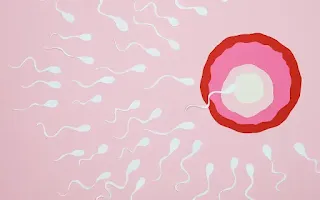All About In Vitro Fertilization in Test Tube Baby (IVF)
In vitro fertilisation
(IVF) is almost a commonplace term today. However, not too long ago, a
mysterious infertility treatment yielded what was then referred to as
"test-tube babies." Louise Brown was the first child of this type to
be created outside of her mother's womb; she was born in England in 1978.
Ø IVF:
What is it?
A set of intricate
treatments known as in vitro fertilisation (IVF) are used to help with
fertility, prevent genetic issues, and aid in child conception.
In IVF, mature eggs are
removed from ovaries and fertilised in a laboratory using sperm. The fertilised
egg (or eggs) is/are then transported to a uterus. IVF cycles are completed in
roughly three weeks. Occasionally, these actions are divided into separate
parts and the process can take longer.
The most successful type
of assisted reproductive technology is IVF. The process is possible with the
use of the couple's sperm and eggs. A known or unknown donor's eggs, sperm, or
embryos may also be used during IVF. A gestational carrier, a woman who has had
an embryo implanted in her uterus, may occasionally be employed.
IVF success rates are
influenced by a variety of variables, including your age and the underlying
reason for your infertility. IVF can also be costly, intrusive, and
time-consuming. IVF can lead to pregnancy with more than one foetus if more
than one embryo is placed in the uterus (multiple pregnancies). Your physician
can explain how IVF functions, any risks, and whether this procedure is right
for you.
Ø How
come it's done?
Infertility or genetic
issues are treated by in vitro fertilisation (IVF). If intrauterine
insemination (IUI) is used to treat infertility, you and your partner might be
able to try less invasive treatment options before attempting IVF, such as
fertility medications to boost egg production or IUI, in which sperm is
directly injected into the uterus around the time of ovulation.
IVF is occasionally
recommended as the first line of treatment for infertility in women over the
age of 40.
IVF is also an option for
those with certain medical issues, such as:
·
Blockage or injury to the fallopian tube:
It is challenging for an egg to become fertilised or for an embryo to move to
the uterus when the fallopian tube is damaged or blocked.
·
Ovarian dysfunction: Fewer eggs are accessible
for fertilisation if ovulation is infrequent or nonexistent.
·
Endometriosis: Endometriosis develops when
tissue resembling the uterine lining implants and spreads outside of the
uterus, frequently impairing the ovaries', uterus', and fallopian tubes.
·
Uterine tumours: In the uterus, fibroids
are benign tumours. In women in their 30s and 40s, they are typical. Fibroids
may prevent the fertilised egg from implanting properly.
·
Previous tubal removal or
sterilisation. The fallopian tubes are cut or blocked during a procedure known
as tubal ligation to permanently end a pregnancy. IVF may be a better option
than tubal ligation reversal surgery if you want to become pregnant after
having your tubes tied.
·
Reduced sperm count or sperm quality:
Sperm may have trouble fertilising an egg if they have low concentration, weak
movement (poor mobility), or abnormalities in the size and form consultation with
an infertility specialist may be required if abnormalities in the semen are
discovered to determine whether there are any treatable issues or underlying
medical problems.
·
Unaccounted-for infertility: Despite
testing for typical causes, unexplained infertility refers to the absence of a
cause.
·
A genetic condition: You might be a
candidate for preimplantation genetic testing, or an IVF treatment if you or
your partner are at risk of passing on a genetic condition to your child.
Although not all genetic issues may be detected, the eggs are checked for
specific genetic issues after being extracted and fertilised. Embryos that
don't have any known issues can be placed inside the uterus.
·
Preservation of fertility in the face of
cancer or other illnesses: IVF for fertility preservation may be an option if
you are about to begin cancer treatment that could affect your fertility, such
as radiation or chemotherapy. Women can have their ovaries harvested for eggs,
which can then be frozen unfertilized for later use. Alternately, the eggs
could be fertilised and frozen.
·
Ø What
dangers exist?
IVF
risks include:
·
Several births
·
Low birth weight and an early delivery
·
Syndrome of ovarian hyperstimulation
·
Miscarriage
·
Complications of the egg retrieval process
·
Ectopic conception
·
Birth flaws
·
Cancer
·
Stress
Ø How
would you get ready for it?
·
Testing for ovarian reserves
·
Menstrual analysis
·
Screening for infectious diseases
·
Simulated embryo transfer practise
·
Exam of the womb

